By Socratis Santik Oglou,
Until our times, it was not socially acceptable to be out as an LGBTQIA+ person. As a consequence, queer art in the twentieth century has been influenced by the need to cover references to queer identity and experiences on the one hand, and a desire for visibility on the other.
The Stonewall Riots of 1969 marked a shift towards more visibility. This is a fundamental event that shaped LGBTQIA+ history, when patrons of a gay bar in New York’s West Village, fought back against a police raid. The confrontation was part of a groundswell of activism linked to the period’s protest spirit, which included civil rights and women’s liberation, and it sparked a new social movement for lesbian and gay rights. Unlike previous forms of gay activism, gay liberation encouraged people to ‘come out’ rather than stay hidden and/or conform to existing social norms. This ethos was reflected in both art and history: LGBTQIA+ artists were encouraged to create art about their sexuality, and LGBTQIA+ art historians started to resurrect LGBTQIA+ art that had gone unnoticed, had been censored, or had been written out of history books. The desire to document and celebrate depictions of queer identity, life, and history is an indication of the period’s politicization of sexuality.
In the 1980s, militant gay activists reclaimed the word “queer” to combat homophobia sparked by the AIDS epidemic, which disproportionately affected gay men at the time. Because of its vague meaning and subtext of social deviance, ‘queer’ has become the default term for many people on the LGBTQIA+ spectrum. Many queer artists see marginality as a starting point for creating self-empowered narratives that challenge dominant gender, race, class, and sexuality perspectives. For others, art has nothing to do with their sexual orientation. Queer refers to someone whose self-identity does not unambiguously adhere to traditional notions of the male or female gender, while transgender refers to someone whose self-identity does not unambiguously adhere to traditional notions of the male or female gender. While queer and trans are often related, they are distinct and not interchangeable.
Queer is a term that was reappropriated by homophobes and oppressors in the 1980s to become a strong political and celebratory term to reflect the experiences of homosexual, lesbian, bisexual, transgender, and intersex individuals. Queer Art has used photography, portraiture, abstract painting, sculpture, and collage to explore the dynamics and depths of queer identity for more than a century, adhering to no specific theme.
In this article, you will find ten queer artists and theirs artworks:
- Hilary Harkness (1971-present)
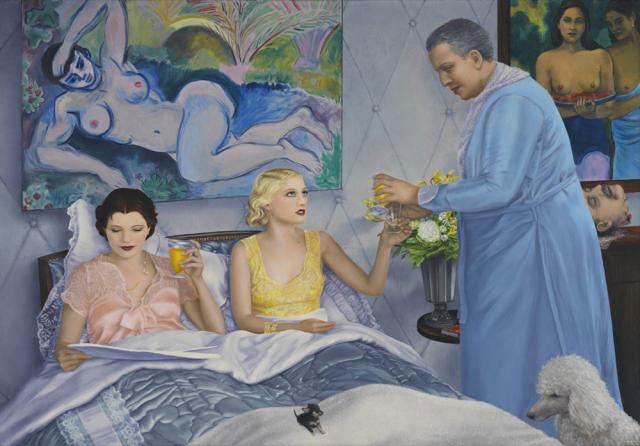
Hilary Harkness was born in Detroit, Michigan and she is an American painter. She is a graduate of the University of California-Berkeley and holds a post-graduate degree from the Yale University of Art. She lives and works in Brooklyn. Harkness is known for her intricate paintings, which often include miniature figures in structures. Her detailed and labor-intensive paintings imitate Old Masters but are infused with a distinctly contemporary sensibility toward hierarchy, war, and gender. Her art has been exhibited in museums all around the world, including the Museo Thyssen-Bornemisza in Madrid and the Deste Foundation in Athens. The Whitney Museum of American Art has a collection of her work.
- David Hockney (1937-present)
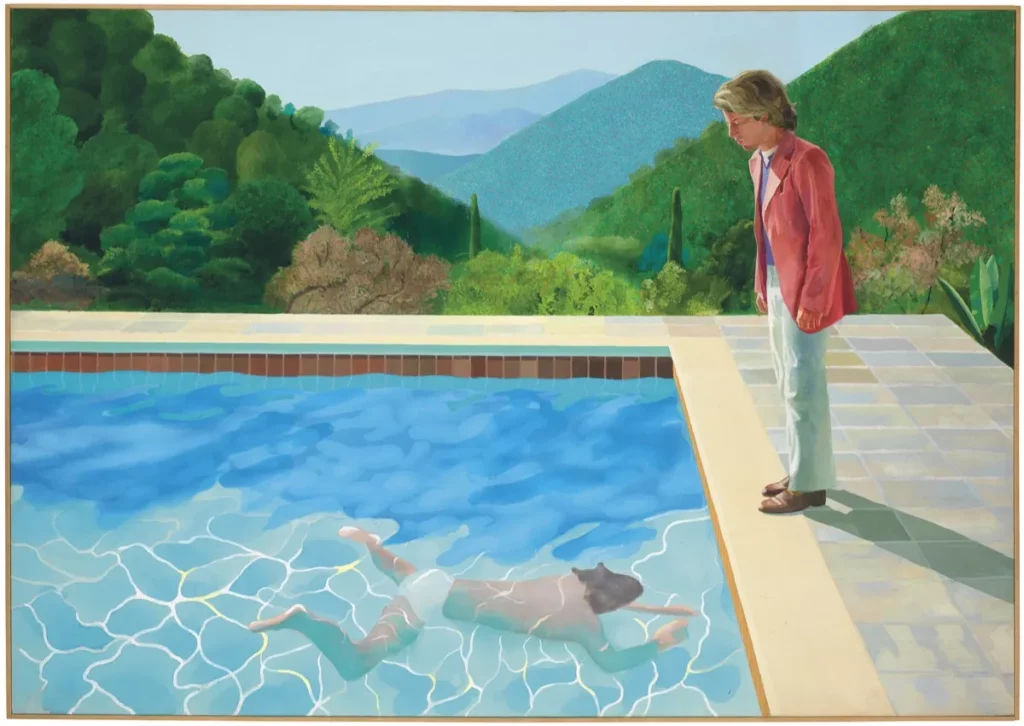
Image source: artsy.net.com
Hockney was born in Bradford, England, and he studied at the Bradford College of Art. From an early age, he was a bibliophile who was also interested in painting, admiring Picasso, Matisse, and Fragonard. Hockney’s early paintings incorporated his literary leanings. His practice, as well as paintings like “We Two Boys Clinging Together,” which he made in 1961, were the first in his art to recognize his homosexuality. He was attracted to California’s light and sun, and his first visit to Los Angeles was in 1963, followed by a relocation three years later.
One of his favorite subjects was Los Angeles’ swimming pools, and he became known for his massive, iconic works. By the 1970s, his expressionistic style had evolved, and he was considered more of a realist. Hockney returned to painting in the late 1980s, concentrating on seascapes, flowers, and portraits of loved ones. He began incorporating technology into his art in 1986 when he made his first handmade prints on a photocopier. In 2011, Hockney was voted the most influential British artist of all time. He continues to paint and exhibit, as well as endorse for arts funding.
- Kyle Vu-Dunn (1990-present)
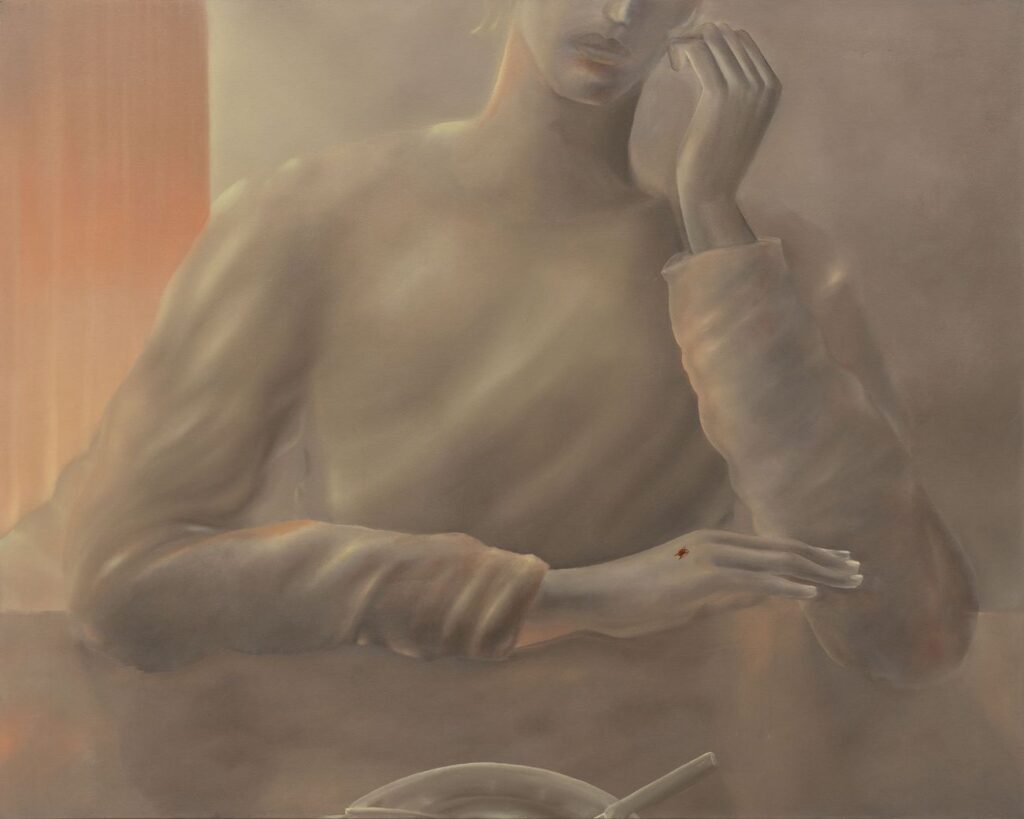
Image source: ocula.com
Kyle Vu-Dunn lives and works in Queens of New York City. He grew up in Michigan and graduated from Maryland Institute College of Art with a BFA in Interdisciplinary Sculpture.In Kyle Vu-Dunn’s paintings, all the male figures are structured by curves. Their svelte, limber bodies tend to melt into one another. The colors in his recent paintings are warm and muted at the same time, and the tone of the paintings ache with desire. Kyle states that in his works he uses his and his husband’s bodies as source references, but there is where the autobiographical connection ends. His favorite medium is relief painting, which he claims helps him to explore the male form in greater physical depth.
- TM Davy (1980-present)
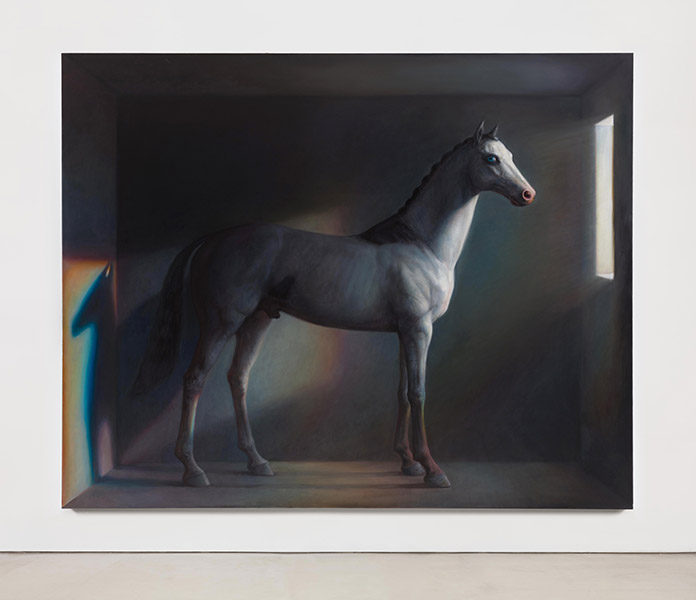
TM Davy is a New York-based painter. He studied at The School of Visual Arts where he also teaches. Davy paints and draws in the style of social realism and portraiture, recognizable for his keen sense of light and color depicting both the human and non-human lives and works. The representational artworks of TM Davy are intimate studies of light, figure, and their interplay. His most recent works focus on the illumination of his subjects’ faces by candles, a practice that arose from his intimately detailed still lives and portraits. Davy’s aesthetic is based on warm realism and close attention to atmosphere and texture, similar to the Italian Renaissance style.
- Louis Fratino (1993-present)
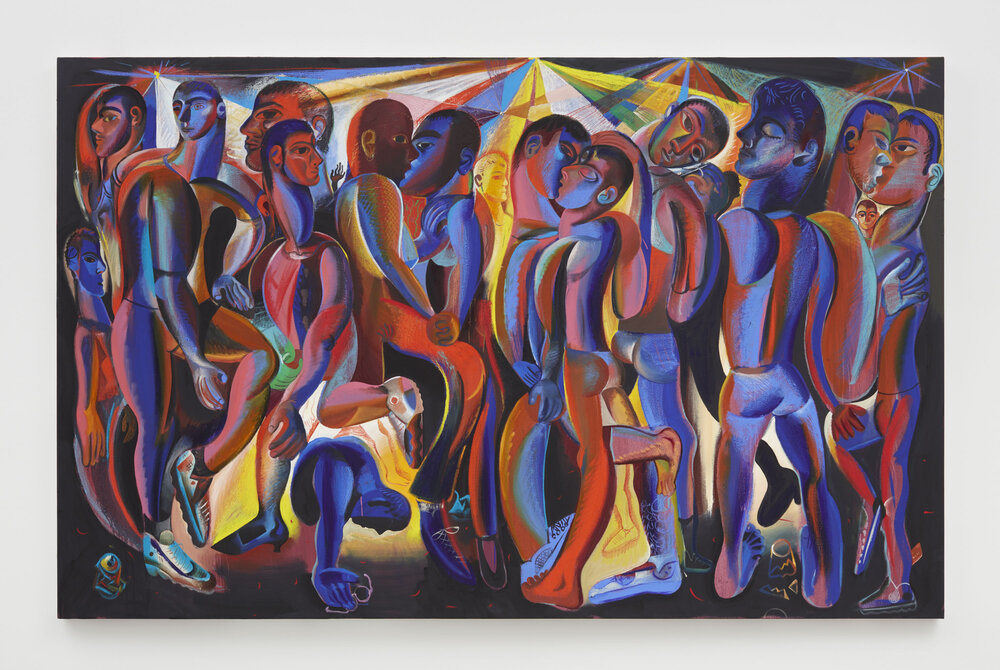
Louis Fratino was born in Annapolis, MD. He graduated from the Maryland Institute College of Art in Baltimore with a major in painting with a concentration in illustration. Fratino makes paintings and drawings from specific memory and art historical references. To define the contemporary body, landscape, and interior spaces, he combines visual languages from antiquity to modernism. Fratino’s dissertation examines the queerness of daily gestures. Well known for his deeply personal paintings, which draw upon his intimate experiences, memories, and fantasies, to portray the everyday lives of gay men in New York City.
Fratino imbues his contemporary subject matter with references to antiquity, whether capturing erotic scenes of lovers kissing in bed or subway passengers staring at their reflections. His paintings often embody the visual style of the early 20th century modernists like Pablo Picasso and Henri Matisse.
- Henry Scott Tuke (1858-1929)
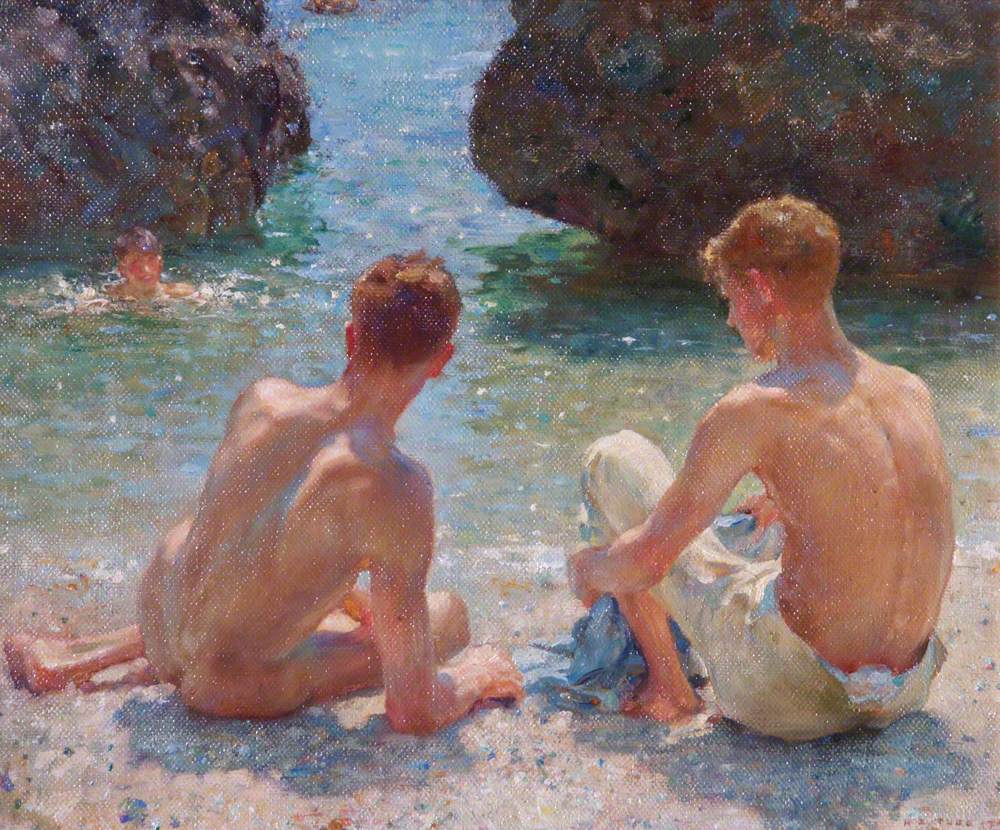
Image source: artuk.com
Henry Scott Tuke was born in York, England. Tuke studied at the Slade School of Art. The British painter is best known for his intimate and sensual paintings of the male nude. In the 1970s, his work returned to the light after he became an icon among the LGBTQIA+ community and a new generation of openly gay artists. His impressionistic renderings of the British coasts, as well as his lifelike capture of the softness and translucency of flesh, have earned him widespread acclaim. Tuke’s obsession with youth in recent years -especially unclothed male adolescents- has posed challenging yet intriguing questions about how to judge his work morally and sensitively in today’s context. Jules Bastien-Lepage influenced him to paint “en plein air”, which translates into “painting outdoors” — an impressionistic technic. Tuke’s work and style were greatly inspired by this experience, which made it easier to portray natural, soft light.
During the 1880s, Tuke became friendly with Oscar Wilde and other prominent poets and writers, who categorized themselves as ‘Uranians’. Uranian was a term used in the nineteenth century to describe a person who was thought to have a female psyche in a male body but is now understood to mean a homosexual male. In their work, the Uranians praised and championed homosexual desire and liberation, and they took inspiration from an idealized version of ancient Greece. Tuke’s sexuality is unknown, but he freely accepted the Uranian ideology. The models’ genitals are seldom seen in Tuke’s drawings, and the models are rarely touching. As a result, his paintings are sensual rather than erotic. Tuke was included in the Tate Britain exhibition “Queer British Art 1861–1967” in 2017, placing him in a significant yet overlooked canon of art history relating to queer artistic techniques and homoerotic desire.
- Gisela McDaniel (1995-present)
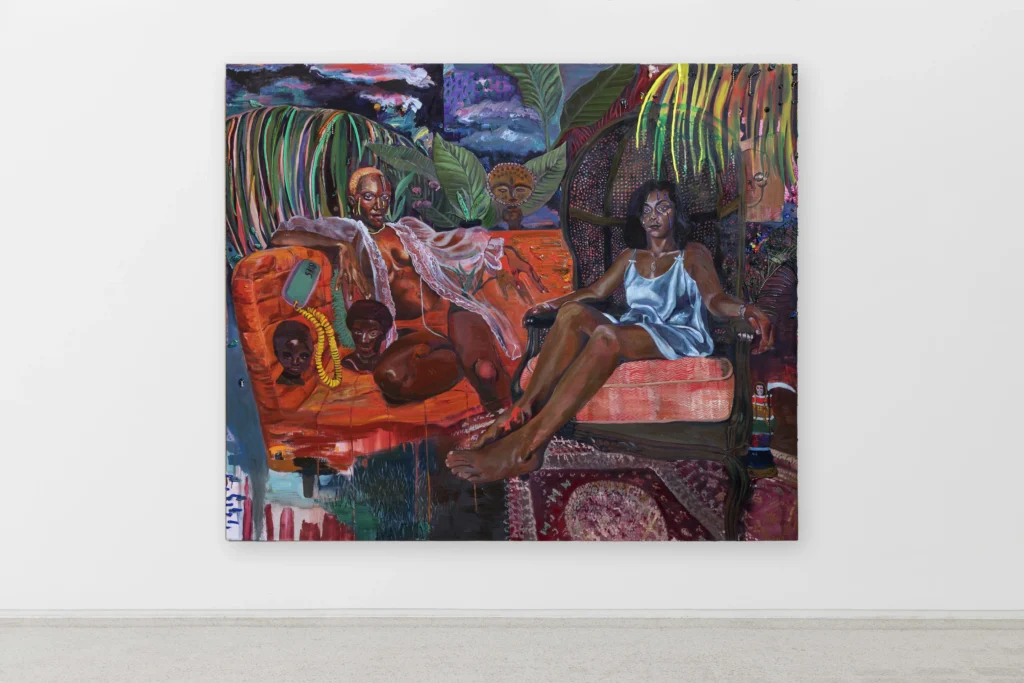
Image source: pilarcorrias.com
Gisela McDaniel was born in Bellevue in Nebraska and lives and works in Detroit, Michigan. She is an indigenous Chamorro artist. Her work is inspired by her own recovery journey from sexual trauma. She creates pieces that “come to life” and literally “speak back” to the audience when triggered by observers by interweaving assemblages of audio, oil paints, and motion technology. She combines survivor’s voices on purpose, to subvert conventional power structures and promote both individual and collective healing. Working primarily with women who identify as indigenous, multiracial, immigrant, and of color, her work actively disrupts and reacts to historical and contemporary patterns of censorship.
She wants to help survivors of gender-based sexual abuse recover, by giving them a voice, a safe place, and a confidential vehicle to not only tell their stories but also to discuss how those stories have impacted them in the long term.
- Hernan Bas (1978-present)
Hernan Basis is a painter based in Detroit, Michigan. He was born in Miami, Florida and he is a graduate of the New World School of the Arts in Miami. Bas is well-known for his portrayals of waifs and dandies, which are inspired by his own experiences. Bas’s paintings are most frequently depicted in rich swatches of color that establish a titled perspective, fluctuating between depiction and abstraction, plus, are known for their romantic and humorous quality. Throughout his practices, viewers are given snapshots of a world co-inhabited by personal and historical examples, such as Nihilism, Romanticism, and literary allusion.
Bas is homosexual and his queerness often appears in his work as waifs and other young men, who are recurring characters. Taking influence from literary sources, Bas depicts boys on the brink of sexual self-discovery. Bas’s delicate, androgynous subjects, set in lush, gothic landscapes and drawn with abundant brushstrokes of synthetic colors, undergo a spectrum of passions.
- Doron Langberg (1985-present)
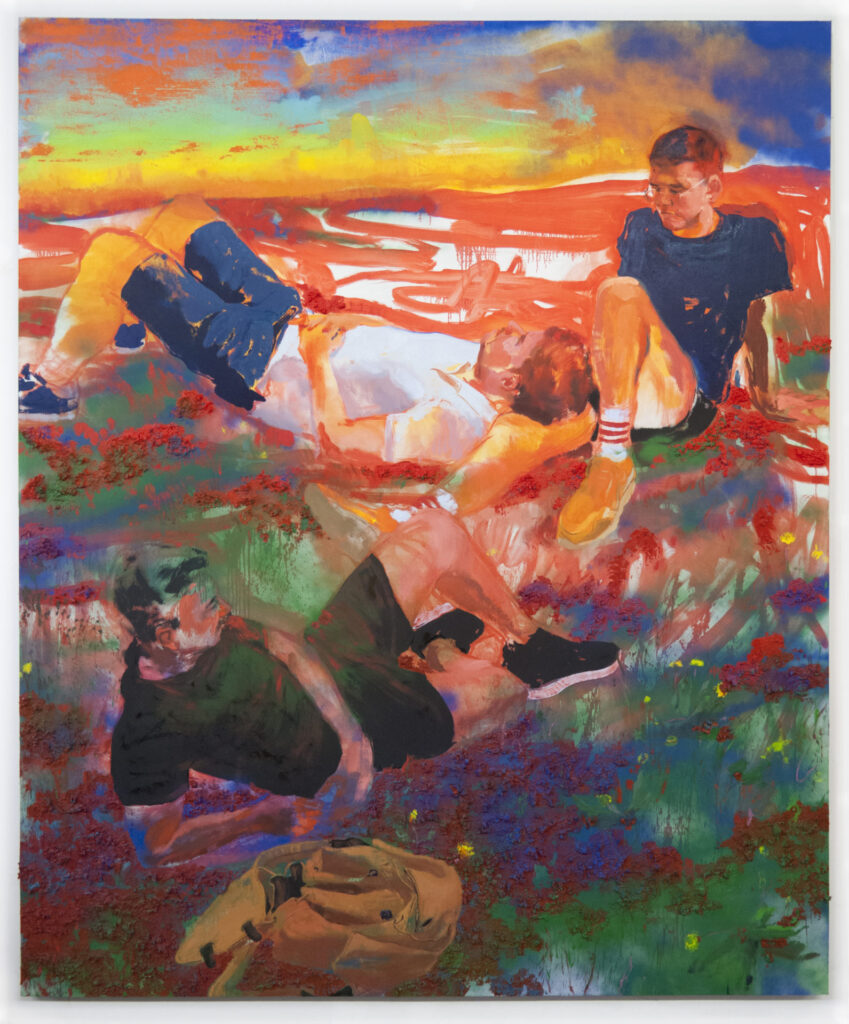
Image source: news.artnet.com
Doron Langberg is a queer Israeli-American contemporary artist based in New York who paints gestural and figurative photographs of intimacy. Langberg’s use of luminous colors that unify skin and environment while conveying atmosphere and emotion reveals their power. Langberg’s exploration of queer intimacy takes place against this backdrop.
The intimacy in Langberg’s paintings is divided into two main strains. In paintings such as Sarah and Lea (2019), and Dad (2016), Langberg captures figures in calm repose scenes, either together or alone. The warm color palette and hazy shapes heighten the sense of intimacy between the figures in the painting, as well as between the subjects of the painting and the artist. In such works, Doron Langberg’s husband, relatives, and friends are depicted with great affection. By contrast, paintings for example the Zach and Craig series (2019) are what Langberg refers to as his ‘penis portraits’ as he calls them, express intimacy in a more explicit way: overt sexual representations emphasized by striking fleshy tones Though their content differs, both arms of Langberg’s practice share the goal of providing a complex understanding of the daily joys of queer love.
- Tom of Finland (1920-1991)
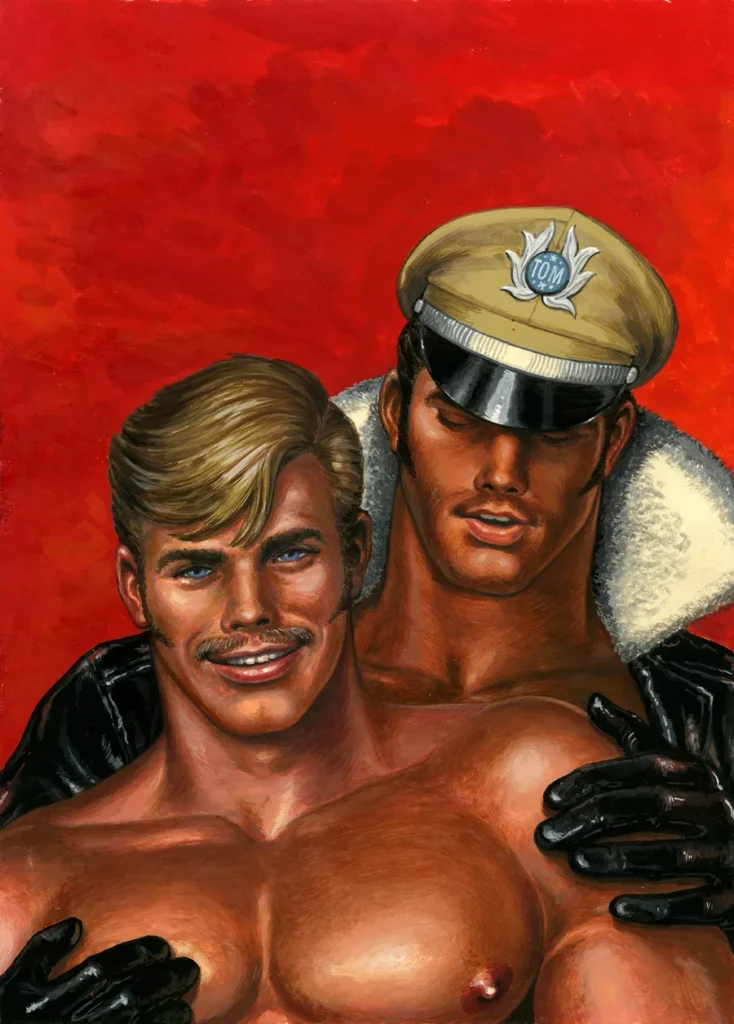
Image source: artsy.net
Tom of Finland (Touko Laaksonen) is universally perceived as one of the most influential artists of the twentieth century for his revolutionary depiction of the male figure. He attended an advertising school in his youth, but it was his ‘dirty sketches’, which he started creating as a teenager, that were the true subject of his attention, both during this formative period and throughout his life.
These masterful depictions of virile men engrossed in acts of homoerotic lust can be interpreted in a variety of ways -art-historical, social, technological- but each one emphasizes his project’s groundbreaking essence. Tom created an imaginary universe that fueled real-world liberation movements and enabled gay men to tap into their inner strength in new ways. Tom’s drawings reaffirm the centrality of sexuality, pleasure, and the body in all aspects of human endeavor; they are the work of a master draftsman whose love for both his medium and his subject matter allowed him to become a powerful cultural force.
Over a career that lasted nearly fifty years, he created thousands of images, beginning in the 1940s, depriving straight homophobic society of its most virile and masculine archetypes; bikers, lumberjacks, cops, cowboys, and sailors, and recasting them as unapologetic, self-aware, and boastfully proud gay sex enthusiasts through deft talent and imagination.
References
- Art History Teaching Sources, Tara Burk & Amy Raffel, Queer Art: 1960s to the Present. Available here.
- HILARY HARKNESS. Available here.
- BIOGRAPHY, David Hockney Biography, April 2, 2014. Available here.
- GALLERY MARIA BERNHEIM. Available here.
- ArtMazeMag, Layla Leiman, On Male Sensuality: In Studio With Kyle Vu-Dunn, 9 October 2018. Available here.
- ArtUK, Henry Scott Tuke: capturing light and the homoerotic gaze. Available here.
- artsy.net, TM Davy. Available here.
- Sikkema Jenkins & Co., Available here.
- Pilar Corrias, Gisela McDaniel. Available here.
- artsy.net, Hernan Bas. Available here.
- Ocula, Dorn Langberg. Available here.
- David Kordansky Gallery, Tom of Finland. Available here.




